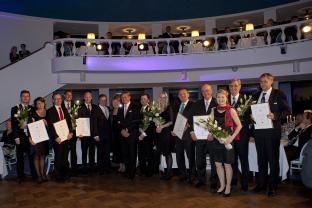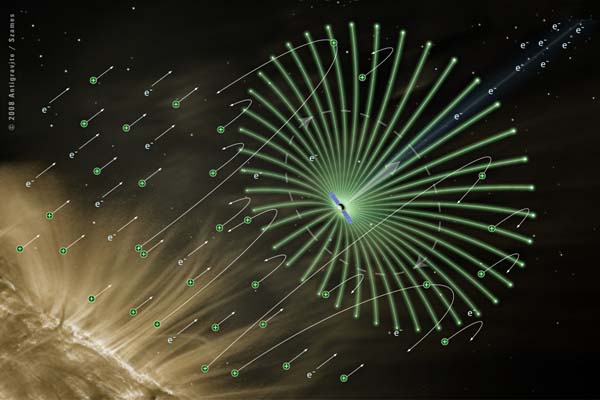 |
Electric solar wind sail spacecraft propulsion |
|
The electric solar wind sail, or electric sail for short, is a propulsion invention made in 2006 at the Kumpula Space Centre by Pekka Janhunen. For E-sail related news, please see the electric sail blog (it is in Finnish, but carries a Translate button to your language). See also the continuously updated list of scientific papers and the list of Frequently Asked Questions.The Finnish startup company Aurora Propulsion Technologies Oy is commercialising electric sail and the closely related plasma brake technology. The electric sail is a new space propulsion concept which uses the solar wind momentum for producing thrust (Janhunen, P., Electric sail for spacecraft propulsion, AIAA Journal of Propulsion and Power, 20, 4, 763-764, 2004, Janhunen, P. and A. Sandroos, Simulation study of solar wind push on a charged wire: solar wind electric sail propulsion, Ann. Geophys., 25, 755-767, 2007). The electric sail is somewhat similar to the more well-known solar radiation pressure sail which is often called simply the solar sail. A full-scale electric sail consists of a number (50-100) of long (e.g., 20 km), thin (e.g., 25 microns) conducting tethers (wires). The spacecraft contains a solar-powered electron gun (typical power a few hundred watts) which is used to keep the spacecraft and the wires in a high (typically 20 kV) positive potential. The electric field of the wires extends a few tens of metres into the surrounding solar wind plasma. Therefore the solar wind ions "see" the wires as rather thick, about 100 m wide obstacles. A technical concept exists for deploying (opening) the wires in a relatively simple way and guiding or "flying" the resulting spacecraft electrically. The solar wind dynamic pressure varies but is on average about 2 nPa at Earth distance from the Sun. This is about 5000 times weaker than the solar radiation pressure. Due to the very large effective area and very low weight per unit length of a thin metal wire, the electric sail is still efficient, however. A 20-km long electric sail wire weighs only a few hundred grams and fits in a small reel, but when opened in space and connected to the spacecraft's electron gun, it can produce several square kilometre effective solar wind sail area which is capable of extracting about 10 millinewton force from the solar wind. For example, by equipping a 1000 kg spacecraft with 100 such wires, one may produce acceleration of about 1 mm/s^2. After acting for one year, this acceleration would produce a significant final speed of 30 km/s. Smaller payloads could be moved quite fast in space using the electric sail, a Pluto flyby could occur in less than five years, for example. Alternatively, one might choose to move medium size payloads at ordinary 5-10 km/s speed, but with lowered propulsion costs because the mass that has to launched from Earth is small in the electric sail. The main limitation of the electric sail is that since it uses the solar wind, it cannot produce much thrust inside a magnetosphere where there is no solar wind. Although the direction of the thrust is basically away from the Sun, the direction can be varied within some limits by inclining the sail. Tacking towards the Sun is therefore also possible. The electric sail won the 2010 Finnish Quality Innovation Prize among Potential innovations. The prize was handed out by the President of Finland Tarja Halonen on November 11, 2010. 
Added Feb 6 2021: This site also hosts pages of my Ceres megasatellite settlement proposal. |

